Alabama Canebrake Pitcher Plant
Sarracenia rubra subsp. alabamensis
Status: Critically Imperiled
The Alabama Canebrake Pitcher Plant is a critically imperiled and very rare plant species that is only found growing in Autauga and Chilton counties in Alabama. These plants grow in wet sandy clay soils of bogs, or areas where water accumulates and are carnivorous, or they consume insects for energy and nutrients!
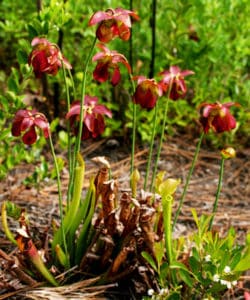
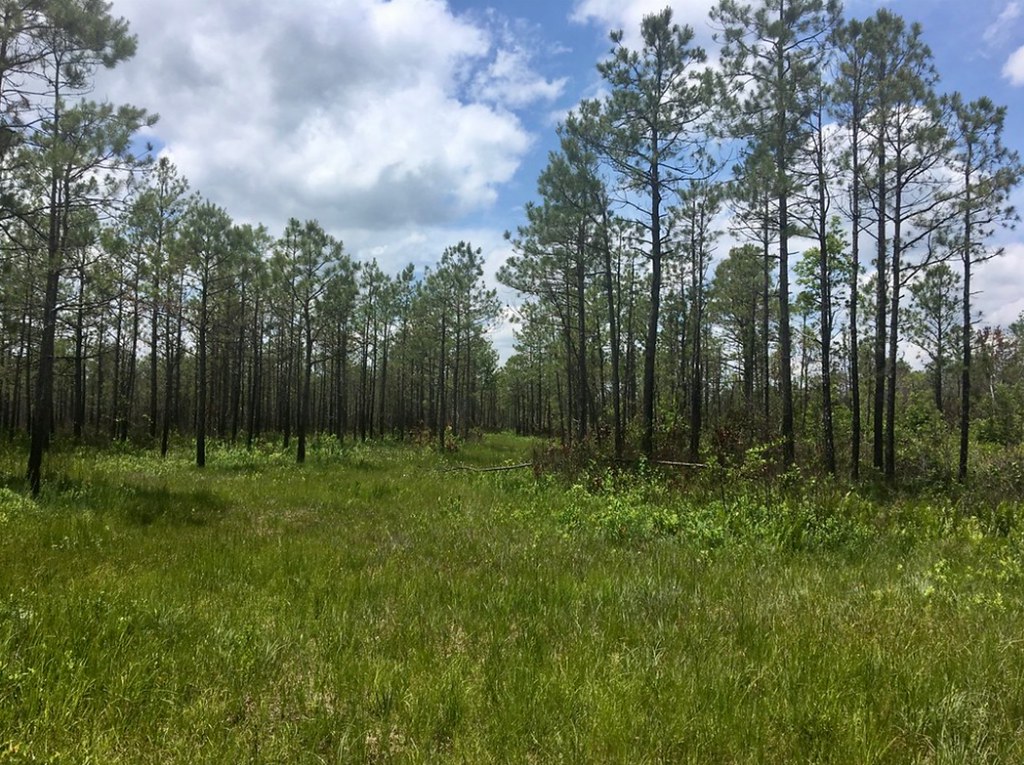
Habitat & Range
The Alabama Canebrake Pitcher Plant is found in the Coastal Plains habitat, but has only been identified growing in the wild in Autauga and Chilton counties of Alabama. These plants depend on wet and sandy clay soils of bogs, or wet areas formed by sandy soil on top of a compacted clay bedrock where water accumulates. These bogs are considered microhabitats, or smaller unique areas with specific conditions found within a larger habitat area. Pitcher plants need lots of sunlight, so these microhabitats depend on open sunny areas.
Food Web & Energy Flow
Pitcher Plants are both Producers AND Secondary Consumers!
Like most plants, the Alabama Canebrake Pitcher Plant gets much of its energy from the sun through photosynthesis. That makes it a Producer in the trophic pyramid. Since these plants grow in wet areas, the soil doesn’t contain all of the nutrients the plants need to survive, namely nitrogen. So the plant actually traps and consumes insects to get these nutrients! It is what is called a carnivorous plant, meaning it is also a secondary consumer.
To attract and trap its prey, the pitcher plants produce a sweet nectar at the opening of their long funnel-shaped flowers. Insects are attracted to this nectar and then fall down into the flower. The inside walls of the tubes are lined with little spiky hairs that prevent the insects from climbing out. Also, at the bottom of the tube there is a liquid that causes the wings of the insects to get soaked and not work well. The trapped insects in the pitcher soon die and are digested by enzymes secreted into the pitcher fluid by the plant.
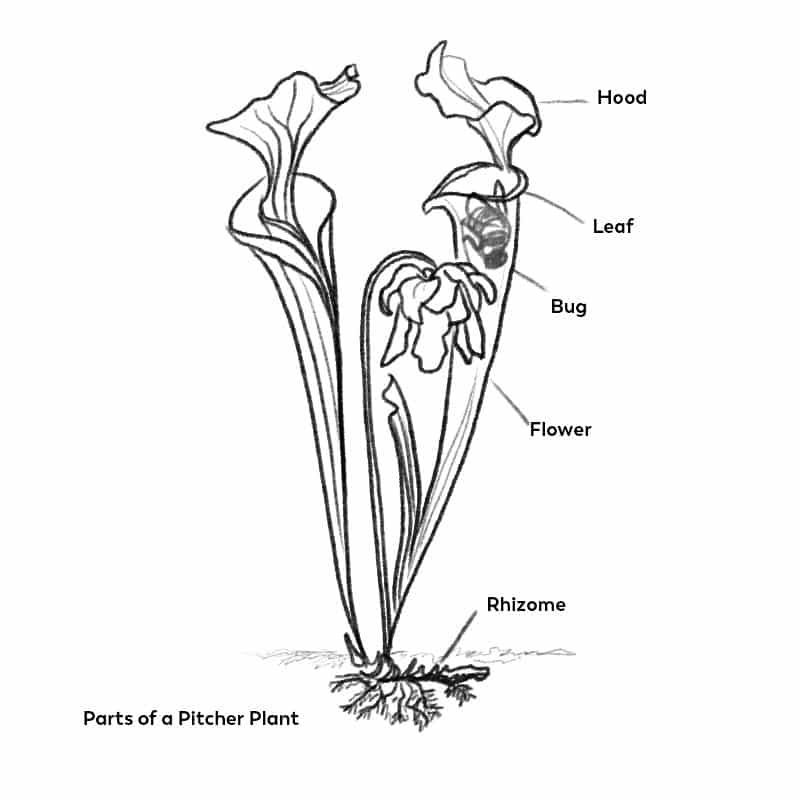
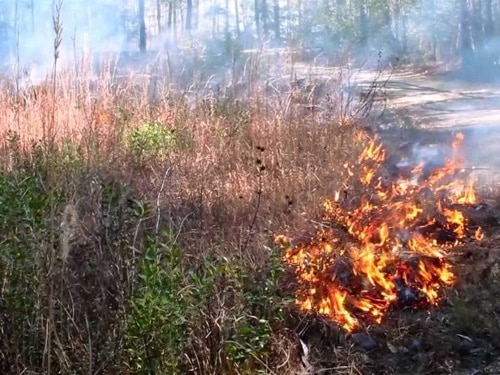
Relationship With Fire
Having wet soil and full sun is critical to pitcher plant bogs. These plants can tolerate very little shade, so they are dependent on frequent fires to keep woody shrubs from growing up and soaking up all of the water and shading out the plants.
Relationship with Other Species
Bog microhabitats, where the Alabama Canebrake Pitcher Plant grows, form a community of plant species that all depend on similar habitat conditions.
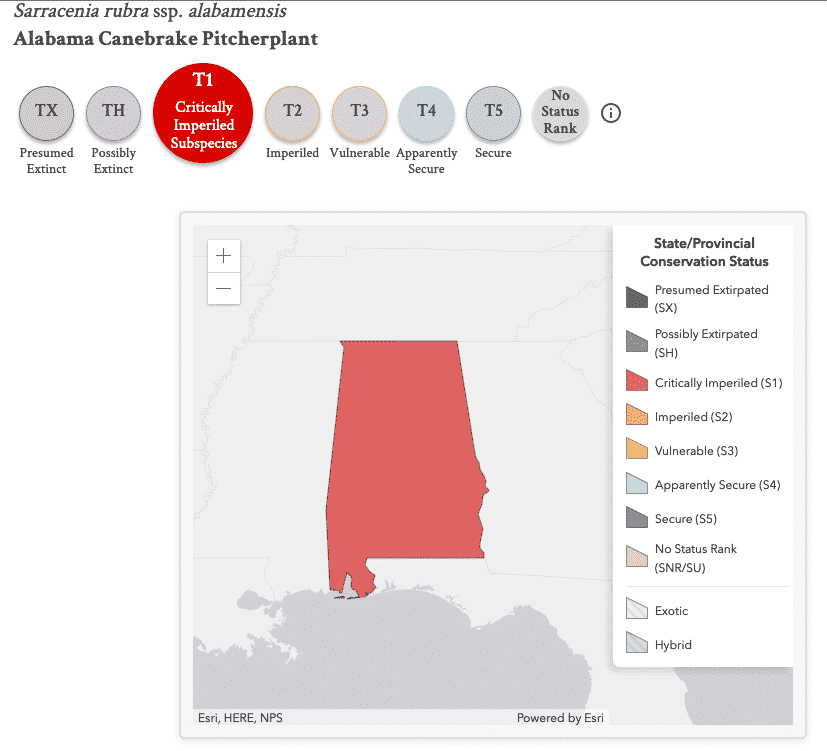
Conservation Status
This particular subspecies of pitcherplant is considered Critically Imperiled or in big trouble of potentially disappearing forever. Since its bog habitat is so specific, there have only been small populations found living in very small areas of Alabama. These same areas have been heavily affected by agriculture and development.
Human Impacts/ Threats
Land Use Conversion
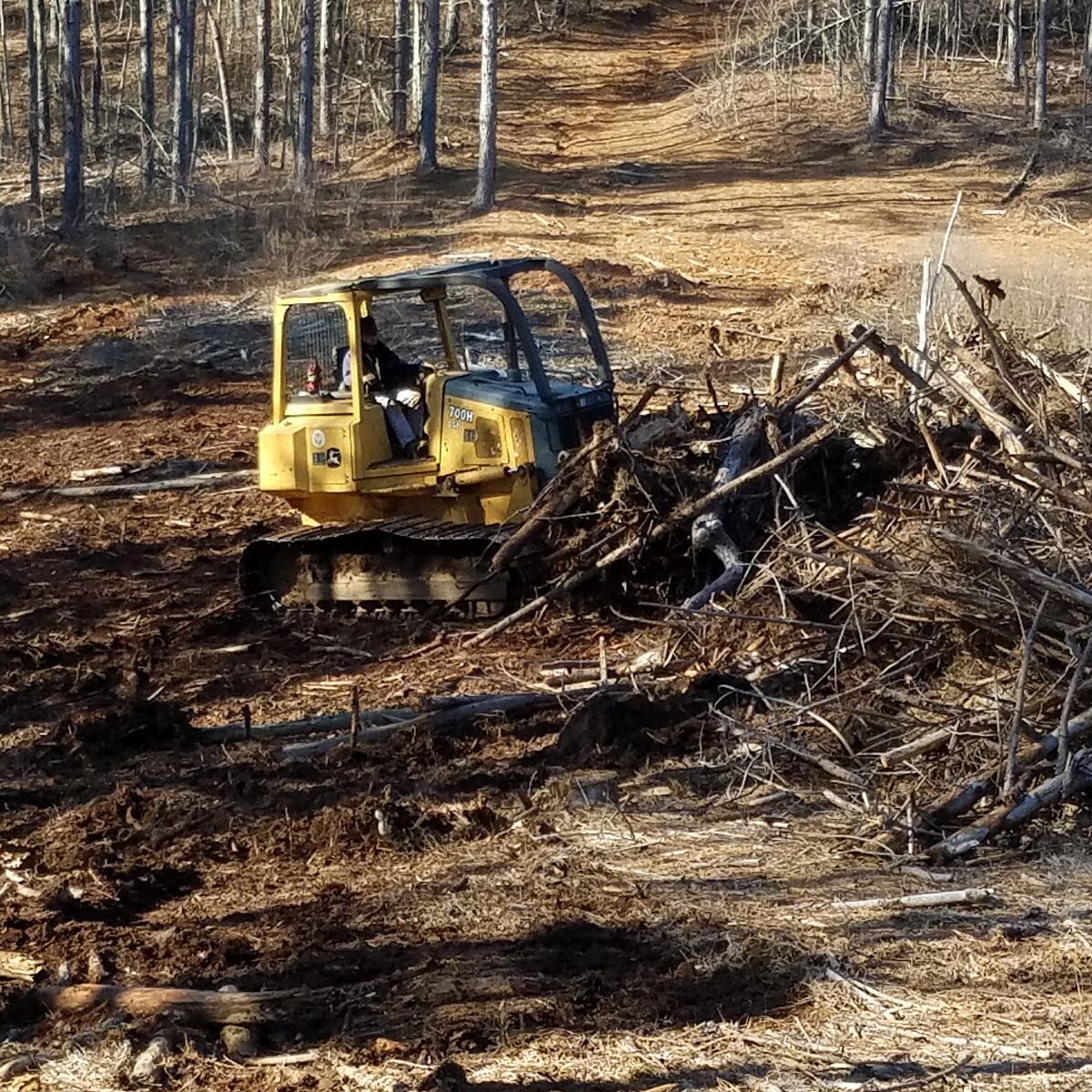
Ideal habitat area this species is being converted into land for houses, roads, agriculture, or even to grow different types of trees to sell.
Fire Suppression

Many people have been raised to think of all fires in the forest as bad, so they go to a lot of effort to prevent or suppress them. But longleaf forests NEED fire!
Poaching
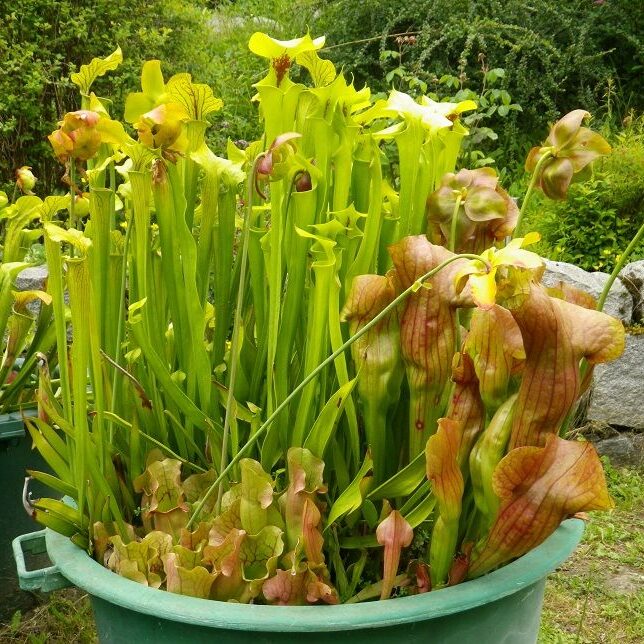
Some people are willing to buy these plants because they're cool looking, which means that sometimes people dig up these plants (illegally) to sell.
Mining
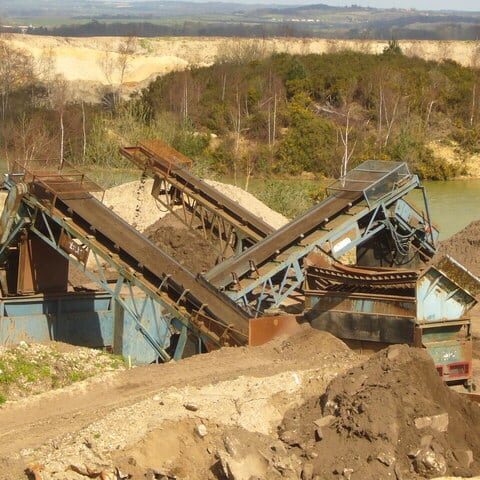
In areas of this species' range, people have found gravel deposits that requires mining to collect and sell. Mining affects groundwater levels, which can harm bog habitats.
